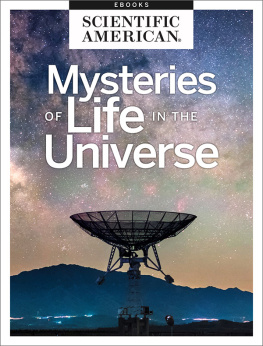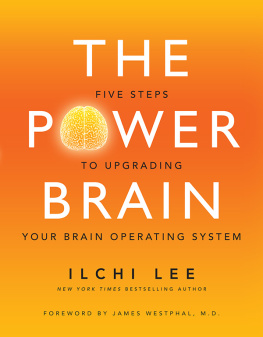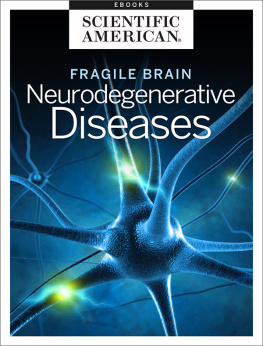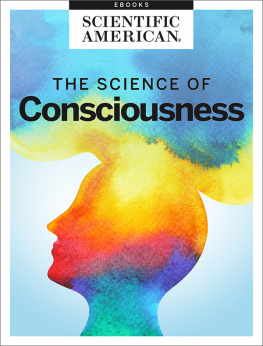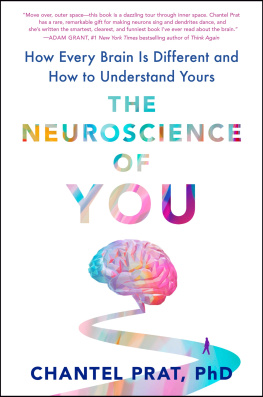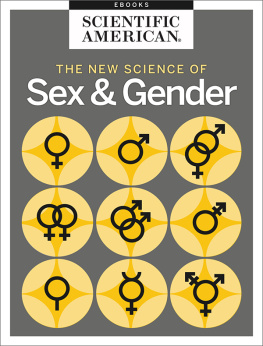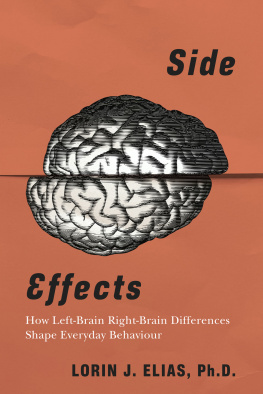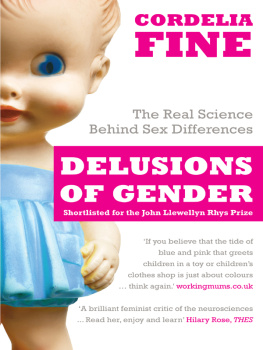Scientific American Editors - His Brain, Her Brain
Here you can read online Scientific American Editors - His Brain, Her Brain full text of the book (entire story) in english for free. Download pdf and epub, get meaning, cover and reviews about this ebook. year: 2022, publisher: The Rosen Publishing Group, Inc, genre: Romance novel. Description of the work, (preface) as well as reviews are available. Best literature library LitArk.com created for fans of good reading and offers a wide selection of genres:
Romance novel
Science fiction
Adventure
Detective
Science
History
Home and family
Prose
Art
Politics
Computer
Non-fiction
Religion
Business
Children
Humor
Choose a favorite category and find really read worthwhile books. Enjoy immersion in the world of imagination, feel the emotions of the characters or learn something new for yourself, make an fascinating discovery.
- Book:His Brain, Her Brain
- Author:
- Publisher:The Rosen Publishing Group, Inc
- Genre:
- Year:2022
- Rating:3 / 5
- Favourites:Add to favourites
- Your mark:
- 60
- 1
- 2
- 3
- 4
- 5
His Brain, Her Brain: summary, description and annotation
We offer to read an annotation, description, summary or preface (depends on what the author of the book "His Brain, Her Brain" wrote himself). If you haven't found the necessary information about the book — write in the comments, we will try to find it.
Scientific American Editors: author's other books
Who wrote His Brain, Her Brain? Find out the surname, the name of the author of the book and a list of all author's works by series.
His Brain, Her Brain — read online for free the complete book (whole text) full work
Below is the text of the book, divided by pages. System saving the place of the last page read, allows you to conveniently read the book "His Brain, Her Brain" online for free, without having to search again every time where you left off. Put a bookmark, and you can go to the page where you finished reading at any time.
Font size:
Interval:
Bookmark:

His Brain, Her Brain
From the Editors of Scientific American
Cover Image: iMrSquid/Getty Images
Letters to the Editor
Scientific American
One New York Plaza
Suite 4500
New York, NY 10004-1562
or editors@sciam.com
Copyright 2017 Scientific American, a division of Nature America, Inc.
Scientific American is a registered trademark of Nature America, Inc.
All rights reserved.
Published by Scientific American
www.scientificamerican.com
ISBN: 978-1-4668-5893-0
Scientific American and Scientific American MIND are trademarks of Scientific American, Inc.,
used with permission.


HIS BRAIN, HER BRAIN
From the Editors of Scientific American
Table of Contents
Introductionby Dawn Stover
Section 1
1.1
by Larry Cahill
1.2
by Lise Eliot
1.3
by David Dobbs
1.4
by Diane F. Halpern, Camilla P. Benbow, David C. Geary, Ruben D. Gur, Janet Shibley Hyde and Morton Ann Gernsbacher
1.5
by Erica Westly
1.6
by Deborah Tannen
Section 2
2.1
by Suzann Pileggi Pawelski
2.2
by Chip Walter
2.3
by Nikolas Westerhoff
2.4
by Christie Nicholson
Section 3
3.1
by Craig Howard Kinsley and Elizabeth Amory Meyer
3.2
by Emily Anthes
3.3
by Katja Gaschler
3.4
by Paul Raeburn
3.5
by Melinda Wenner Moyer
His and Hers
Boy or girl? Even before a person is born, thats the first thing everyone wants to knowunderscoring just how much value human societies of all types place on gender.
The great divide between male and female has inspired poets, intrigued biologistsand spawned an entire industry of self-help books. It has also given rise to a few misconceptionsalong the way, such as the notion that smaller brains make the so-calledfairer sex inherently less intelligentor at least bad at math.
In this eBook, we take a closer look at genderand the brain. In these pages, you will learn about a variety of male-female differencesand also some surprising similarities.[Editor's Note: this eBook was originally published as a special edition of Scientific American Mind.]
For instance, studies of baby boys and girlssuch as the ones described in Big Answersfrom Little People, by David Dobbsfind few differences in theircognitive skills. But there is no denying that boys love trucks, whereas girls prefer dollsand the same is true of male and female monkeys. Some differences between boys andgirls are evident even on the first day of a babys life.
Most of these discrepancies start out small but get amplified by our gender-obsessedculture. As neuroscientist Lise Eliot explains in The Truth about Boys and Girls, tea parties and wrestling matches leave their stamp on growing brains. Thegap that separates boys and girls would be less noticeable if parents encouraged activitiessuch as reading for boys and video games for girls.
By the time they reach adulthood, males and females not only have nonidenticalbrain architectures but also divergent ways of speaking, parenting and responding toboth tragedy and comedy. The Humor Gap by Christie Nicholson and Different Shades of Blue by Erica Westly explorethese divides. She wants someone who can make her laugh. He wants someone who willlaugh at his jokes. And when shes depressed, she gets sad. He gets mad.
But men and women arent from different planets. Few sex disparities are as hardwiredas popular accounts make them out to be. A better understanding of the realand imagineddifferences between his brain and her brain can help us overcome culturalbiases, improve communication and strengthen relationships.
Dawn Stover
Issue Editor


His Brain, Her Brain
by Larry Cahill
On a gray day in mid-Januaryof 2005, Lawrence Summers,then president of HarvardUniversity, suggested that innatedifferences between the male andfemale brain might be one factor underlyingthe relative scarcity of women inscience fields. His remarks reignited adebate that has been smoldering for acentury, ever since some scientists sizingup the brains of both sexes beganusing their main findingthat femalebrains tend to be smallerto bolsterthe view that women are intellectuallyinferior to men.
To date, no one has uncovered anyevidence that anatomical disparitiesmight render women incapable ofachieving academic distinction inmath, physics or engineering. And the brains of men andwomen have been shown to be quiteclearly similar in many ways. Nevertheless,over the past decade or so investigatorshave documented an astonishingarray of structural, chemical and functional variations in the brains of malesand females.
These inequities are not just interestingidiosyncrasies that might explainwhy more men than women enjoy theThree Stooges. They raise the possibilitythat we might need to develop sex-specifictreatments for a host of conditions,including depression, addiction,schizophrenia and post-traumaticstress disorder (PTSD). Furthermore,the differences imply that researchersexploring the structure and function ofthe brain must take into account the sexof their subjects when analyzing theirdataand include both women andmen in future studies or risk obtainingmisleading results.
Sculpting the Brain
Not so long ago neuroscientistsbelieved that sex differences in thebrain were limited mainly to those regionsresponsible for mating behavior.In a 1966 Scientific American articleentitled Sex Differences in theBrain, Seymour Levine of StanfordUniversity described how sex hormoneshelp to direct divergent reproductivebehaviors in ratswith malesengaging in mounting and femalesarching their backs and raising theirrumps to attract suitors. Levine mentionedonly one brain region in his review:the hypothalamus, a smallstructure at the base of the brain thatis involved in regulating hormone productionand controlling basic behaviorssuch as eating, drinking and sex.A generation of neuroscientists cameto maturity believing that sex differencesin the brain referred primarilyto mating behaviors, sex hormonesand the hypothalamus.
That view, however, has now beenknocked aside by a surge of findingsthat highlight the influence of sex onmany areas of cognition and behavior,including memory, emotion, vision,hearing, the processing of faces andthe brains response to stress hormones.This progress has been acceleratedin the past decade by the growinguse of sophisticated noninvasiveimaging techniques such as positron emissiontomography (PET) and functionalmagnetic resonance imaging(fMRI), which can peer into the brainsof living subjects.
These imaging experiments revealthat anatomical variations occur in anassortment of regions throughout thebrain. Jill M. Goldstein of HarvardMedical School and her colleagues,for example, used MRI to measure thesizes of many cortical and subcorticalareas. Among other things, these investigatorsfound that parts of thefrontal cortex, the seat of many highercognitive functions, are bulkier inwomen than in men, as are parts ofthe limbic cortex, which is involved inemotional responses. In men, on theother hand, parts of the parietal cortex,which is involved in space perception,are bigger than in women, as isthe amygdala, an almond-shapedstructure that responds to emotionallyarousing informationto anythingthat gets the heart pumping andthe adrenaline flowing. These size differences,as well as others mentionedthroughout the article, are relative:they refer to the overall volume of thestructure relative to the overall volumeof the brain.
Font size:
Interval:
Bookmark:
Similar books «His Brain, Her Brain»
Look at similar books to His Brain, Her Brain. We have selected literature similar in name and meaning in the hope of providing readers with more options to find new, interesting, not yet read works.
Discussion, reviews of the book His Brain, Her Brain and just readers' own opinions. Leave your comments, write what you think about the work, its meaning or the main characters. Specify what exactly you liked and what you didn't like, and why you think so.


